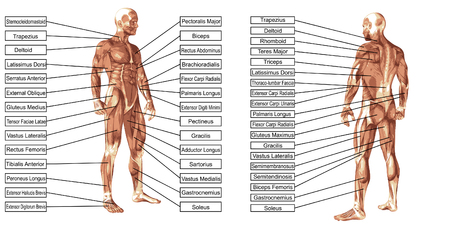Introduction to Paediatric Physiotherapy in the UK
Paediatric physiotherapy holds a distinctive and vital place within the UK’s healthcare landscape, serving as a bridge between medical intervention and functional independence for children with a wide range of health conditions. Historically, the role of paediatric physiotherapists has evolved in parallel with developments in the NHS, moving from an emphasis on post-acute polio rehabilitation in the mid-20th century to today’s focus on early intervention, family-centred care, and multidisciplinary collaboration. In both NHS and private practice settings across the UK, paediatric physiotherapists now work not only to address physical impairments but also to enhance participation in everyday life, supporting children’s developmental milestones and long-term wellbeing. The unique structure of UK healthcare means practitioners must navigate differing referral pathways, funding models, and community resources while upholding the highest standards of evidence-based practice. Through this combination of tradition and innovation, paediatric physiotherapy continues to adapt to meet the complex and ever-changing needs of children and families throughout the country.
2. Core Principles and Models of Care
Paediatric physiotherapy in the UK is underpinned by a set of core principles and models of care that ensure children receive holistic, effective, and evidence-based support tailored to their unique developmental needs. Understanding these foundational concepts is key for practitioners, parents, and anyone involved in the journey of supporting children’s health.
Foundational Principles
At its heart, paediatric physiotherapy in the UK revolves around child-centred care. This means interventions are designed not just around the child’s physical requirements, but also their emotional well-being, family context, and aspirations. The following table summarises some of the fundamental principles guiding practice:
| Principle | Description |
|---|---|
| Family-Centred Practice | Engaging families as active partners in goal-setting and therapy planning, recognising their expertise about their child. |
| Individualised Assessment | Comprehensive evaluations to capture each child’s strengths, challenges, and environmental factors. |
| Function-Focused Goals | Prioritising meaningful outcomes that enhance daily participation and independence. |
Evidence-Based Approaches
The UK’s paediatric physiotherapy community places a strong emphasis on evidence-based practice. Practitioners consistently draw upon up-to-date research, clinical guidelines (such as those from NICE), and outcome measures to inform intervention choices. Regular auditing and reflective practice are embedded within professional standards to ensure quality of care. Combining empirical evidence with clinical experience allows therapists to adapt strategies for diverse conditions ranging from cerebral palsy to musculoskeletal injuries.
Models of Care Delivery
Multidisciplinary collaboration is a cornerstone of the UK approach. Physiotherapists work closely with occupational therapists, speech and language therapists, nurses, doctors, educational staff, and social services to deliver coordinated care. This collaborative model ensures a shared understanding of each child’s needs and promotes seamless transitions between health, education, and community settings.
| Model | Main Features |
|---|---|
| Community-Based Services | Therapists deliver support at home or school to promote real-life participation. |
| Centre-Based Clinics | Specialist assessments and interventions provided at NHS or private facilities. |
| Integrated Pathways | Joined-up working across sectors for complex needs or long-term conditions. |
Reflecting on Practice: A Personal Note
From my own experience within NHS teams, I’ve seen how integrating these principles transforms outcomes—not only for children but also for their families. Open communication, mutual respect among professionals, and adapting plans as children grow are vital elements that underpin successful paediatric physiotherapy in the UK context.

3. Assessment and Intervention Strategies
In paediatric physiotherapy across the UK, assessment and intervention strategies form the bedrock of effective clinical practice. Understanding these processes is crucial for delivering targeted, child-centred care. Here’s a closer look at how UK physiotherapists assess and support children with diverse needs, ensuring each child reaches their fullest potential.
Comprehensive Assessment Tools
Assessment begins with a detailed history-taking, often involving parents or carers to gather insights into the child’s developmental milestones, medical history, and daily routines. Commonly used standardised tools in the UK include the Gross Motor Function Measure (GMFM), Pediatric Evaluation of Disability Inventory (PEDI), and Movement Assessment Battery for Children (MABC-2). These assessments help to objectively measure motor skills, functional abilities, and participation in daily activities. Importantly, therapists also observe play and natural movement within familiar environments—whether that’s at home, school, or in clinic settings—to gain a holistic understanding of each child’s strengths and challenges.
Goal Setting: A Collaborative Approach
Goal setting in the UK is highly collaborative, reflecting the NHS ethos of partnership between families and professionals. Goals are shaped using SMART principles—Specific, Measurable, Achievable, Relevant, and Time-bound—to ensure they are meaningful to both the child and their family. For example, a goal might be “to walk independently from classroom to playground within one school term.” Regular review meetings ensure goals remain relevant as children progress or as their needs change.
Evidence-Based Intervention Frameworks
Intervention strategies are tailored to suit each child’s unique situation, drawing on frameworks such as the International Classification of Functioning, Disability and Health – Children & Youth (ICF-CY). UK paediatric physiotherapists often use a blend of approaches including neurodevelopmental treatment (NDT), task-specific training, and play-based therapy. Interventions may be delivered individually or in groups and often incorporate advice for teachers and parents to embed therapeutic activities into daily life. Multidisciplinary teamwork is a hallmark of UK practice; therapists regularly liaise with occupational therapists, speech therapists, educational staff, and community nurses to provide integrated care.
Adapting to Age and Condition
Crucially, assessment and interventions are always adapted according to age, developmental stage, and specific diagnosis—be it cerebral palsy, Down syndrome, developmental coordination disorder or musculoskeletal injuries. Early years interventions focus on play and movement exploration; school-aged children may benefit from skill-building for sports or classroom participation; adolescents might receive support for transitioning to independent living or further education.
A Practical Perspective
From my own experience working within NHS paediatric teams, I’ve seen first-hand how critical it is to build rapport with both children and families during assessments. Taking time to listen helps foster trust—and that trust lays the foundation for genuine progress through well-chosen goals and meaningful interventions. Ultimately, what matters most is creating an environment where every child feels supported to thrive—physically, emotionally, and socially—within their local communities.
4. Family-Centred and Culturally Responsive Practice
In the UK, paediatric physiotherapy is deeply rooted in a family-centred approach, recognising that children thrive best when their families are actively involved in their care. This means therapy isn’t just about the child; it’s about empowering parents, carers, and siblings to support progress in everyday settings—whether at home, school, or within the local community. My experience working across various NHS trusts has shown me time and again that effective outcomes often depend on building strong, collaborative relationships with families from the very first session.
Family-centred practice also demands a culturally responsive mindset. The UK is remarkably diverse, with communities representing a wide range of cultural backgrounds, languages, and traditions. It’s vital to respect these differences by listening carefully to each family’s values and beliefs about health, disability, and rehabilitation. For example, some families may have different expectations around physical contact during therapy sessions or place particular emphasis on group rather than individual activities.
To illustrate the core components of culturally responsive practice in UK paediatric physiotherapy, here’s a practical comparison:
Core Principle |
Application in UK Settings |
|---|---|
Family Involvement |
Inviting families to participate in goal-setting meetings and home exercise planning; providing tailored education materials for parents |
Cultural Sensitivity |
Offering interpreter services; adapting communication styles to fit family preferences; respecting dietary or religious practices during sessions |
Community Needs |
Liaising with schools and community groups; addressing barriers such as transport or access to facilities; signposting to local support networks |
Ultimately, taking a family-centred and culturally responsive approach is not just best practice—it’s essential for delivering equitable and effective care in the UK. By valuing each family’s unique strengths and context, we create therapy plans that are both realistic and meaningful. In my work, I’ve found that this approach builds trust and motivation, leading to better engagement and more lasting results for children across all corners of British society.
5. Navigating the NHS and Community Resources
One of the most critical aspects of paediatric physiotherapy in the UK is understanding how to access services effectively through the NHS and wider community resources. For many families and professionals alike, the journey often begins with recognising a child’s needs, followed by navigating referral pathways and integrating support from both health and educational sectors.
Referral Pathways: Getting Started
The typical entry point for paediatric physiotherapy within the NHS is usually via a GP, health visitor, or sometimes directly through a school nurse or Special Educational Needs Coordinator (SENCO). Once concerns are identified—be it delayed milestones, mobility challenges, or specific conditions—professionals can make referrals to local paediatric physiotherapy services. Each NHS Trust may have its own referral criteria and forms, so it pays to check local guidelines. Importantly, some areas offer self-referral options, empowering parents to seek help without waiting for another professional’s input.
Integrated Services: Health Meets Education
In practice, paediatric physiotherapists in the UK rarely work in isolation. Instead, they are part of multidisciplinary teams that often include occupational therapists, speech and language therapists, educational psychologists, and teachers. Integrated working is especially vital for children with complex needs or those who have Education, Health and Care Plans (EHCPs). Regular meetings between families, health professionals and schools help ensure everyone is on the same page—maximising consistency in therapy approaches across settings.
Accessing Community Support Networks
Beyond formal healthcare routes, there’s a wealth of community-based resources available to support children and families. Local charities such as Scope or Contact offer advice lines, peer support groups, workshops and even grants for equipment. Many boroughs also run parent-carer forums—valuable spaces for sharing lived experiences and accessing local information. Online communities (like Mumsnet or specific Facebook groups) can be helpful too, especially when seeking recommendations for private practitioners or activity clubs tailored to additional needs.
Practical Tips for Families
From personal experience, it’s worth keeping detailed records of assessments, appointments and correspondence with professionals. Don’t hesitate to ask questions about waiting times or eligibility criteria—sometimes persistence makes all the difference. If you’re unsure where to start, your local Children’s Centre or Citizen’s Advice Bureau can signpost you to relevant NHS teams or voluntary sector partners.
Navigating paediatric physiotherapy in the UK requires patience and advocacy, but there’s a robust network ready to support children’s development at every stage. By understanding referral processes and tapping into integrated services and community resources, families can ensure their children receive the best possible care tailored to their individual needs.
6. Common Challenges and Practical Insights
Delivering effective paediatric physiotherapy in the UK comes with a unique set of challenges, shaped by both clinical realities and the countrys regulatory landscape. One of the most significant barriers practitioners face is navigating resource limitations within the NHS. Waiting lists can be lengthy, and access to specialist equipment is not always straightforward. This sometimes requires creative problem-solving—adapting exercises for home use or working closely with families to make the most of available community resources.
Ethical Considerations in Practice
Ethics play a central role in every clinical interaction. In paediatric physiotherapy, consent and assent are particularly nuanced: children may struggle to fully understand their treatment, while parents or guardians must be included as advocates and decision-makers. Practitioners must balance respecting family wishes with adhering to evidence-based practice, especially when opinions differ about treatment goals or intensity.
Navigating UK-Specific Regulations
The UK’s safeguarding policies demand vigilance and proactive communication. All therapists are required to complete regular training on child protection and adhere strictly to confidentiality protocols. This can create tension when sharing information across multidisciplinary teams, but clear documentation and open dialogue help ensure compliance while prioritising patient welfare.
Societal Expectations and Diversity
With the UK’s diverse population, cultural competence is essential. Therapists frequently encounter families with varying beliefs about disability, rehabilitation, and even touch during therapy. Addressing these differences respectfully—sometimes through interpreters or cultural liaison officers—can build trust and foster better engagement with treatment plans.
Practical Solutions from Experience
Overcoming these challenges often relies on teamwork and adaptability. Building strong relationships with local schools, GPs, and social services can streamline care pathways for children with complex needs. Sharing experiences with peers through supervision groups or CPD workshops also provides valuable support, helping therapists stay resilient and reflective amidst daily pressures.
Ultimately, while the hurdles are real, so too are the rewards. By staying attuned to ethical principles, regulatory frameworks, and the lived realities of UK families, paediatric physiotherapists can deliver care that is both compassionate and effective—even when resources are stretched.
7. Continuing Professional Development and Future Directions
For paediatric physiotherapists practising in the UK, ongoing professional development is not just a formality—its an essential part of maintaining high standards of care and keeping pace with an ever-evolving healthcare landscape. The Health and Care Professions Council (HCPC) mandates continuous professional development (CPD) as a requirement for registration. This means practitioners must actively engage in learning activities that enhance their skills and knowledge throughout their careers. These may include attending workshops, completing accredited courses, engaging in peer learning, or even contributing to research.
UK Standards for Ongoing Education and Registration
To remain on the HCPC register, paediatric physiotherapists must keep a detailed record of their CPD activities and be prepared for periodic audits. In addition to HCPC requirements, the Chartered Society of Physiotherapy (CSP) provides further guidance and resources to support lifelong learning. Many NHS Trusts also offer structured in-house training programmes and encourage participation in multidisciplinary team education sessions, which are invaluable for broadening perspectives and improving clinical practice.
Current Trends Shaping Paediatric Physiotherapy
The future of paediatric physiotherapy in the UK is being shaped by several important trends. There is a growing emphasis on evidence-based practice, driven by new research findings and advances in technology. Digital health solutions, such as tele-rehabilitation and app-based exercises, are increasingly integrated into care pathways, particularly since the COVID-19 pandemic highlighted their value. Moreover, theres a strong movement towards more family-centred approaches and involving children in decision-making about their treatment plans.
Looking Ahead: Opportunities and Challenges
As awareness of childhood health issues grows, so too does demand for specialist paediatric physiotherapists. The profession will need to adapt to rising caseloads related to long-term conditions such as obesity and mental health challenges alongside traditional neurological or musculoskeletal cases. Continued collaboration between NHS services, private practice, schools, and community organisations will be critical. For those committed to this field, investing in CPD is not simply about ticking a box—it’s about shaping the future of paediatric physiotherapy in the UK and ensuring every child receives the best possible start in life.

